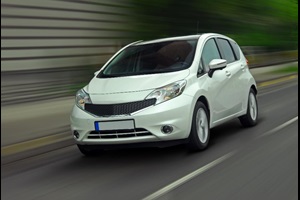- Lithium Batteries
- Transportation Efficiencies
- Plug-In EVs
Unexpected EV Demand Has Automakers Looking to Lithium

Underestimated Demand
The response to the Model 3 is unheard of in the modern automotive era. However, Tesla isn’t the only electric car maker observing greater than expected demand. In February, a BMW spokesperson acknowledged that the company “just massively underestimated demand” in regards to the company's plug-in hybrid electric vehicle (PHEV) 3 series variant, the 330e, in the United Kingdom. A month prior, General Motors (GM) affirmed its upcoming 200-mile range battery electric vehicle (BEV) will not be production-limited, and a volume of 50,000 Bolts in 2017 is possible if demand supports it.
Though plug-ins have met global light duty vehicle (LDV) markets in varying degrees of success, unanticipated demand is not new to the plug-in market. In fact, the most glaring example of the demand/supply imbalance has been going on for the last 3 years as a manifestation of Mitsubishi’s inability to introduce the Outlander PHEV to North America due to unexpected demand in Japan and Europe.
Looking to Lithium
Recognizing that annual sales of plug-ins are going nowhere but up, some automakers are thinking ahead and diving deep into the battery supply chain to secure raw materials before prices become a problem. Despite a general dive in global prices of oil, gas, and mineral commodities, lithium prices have been resilient and robust.
Lithium is a core component of batteries for mobile devices, EVs, and grid-tied or residential energy storage applications. With no clear alternative, Guidehouse Insights anticipates lithium demand (and therefore prices) will rise substantially over the next decade. Within the battery, a lithium-based compound is layered onto the cathode and the battery is filled with a lithium-based electrolyte. In total, Guidehouse Insights estimates lithium materials make up around 10% of overall battery production costs. All things being equal, a doubling in the price of lithium would mean a 10% increase in battery production costs.
Price increases from materials may be easily absorbed by battery makers as costs are cut elsewhere through economies of scale or energy density improvements. However, automakers that can help their suppliers hold raw material battery costs low while the market is in its infancy will likely achieve significant advantages over emerging challengers and witness Prius-like success in a technology segment with much more growth potential.